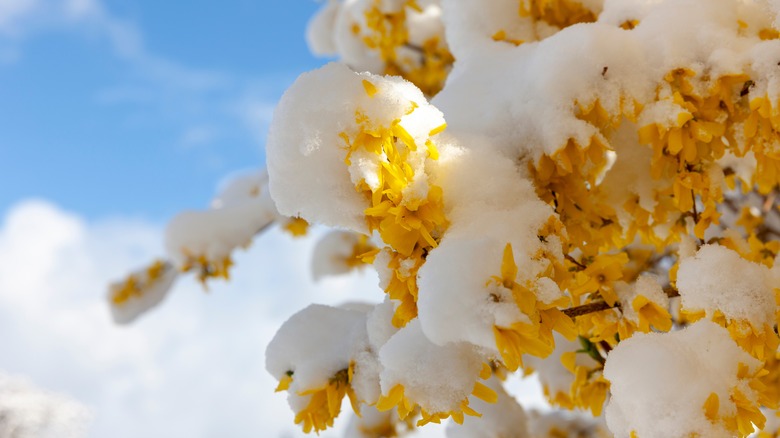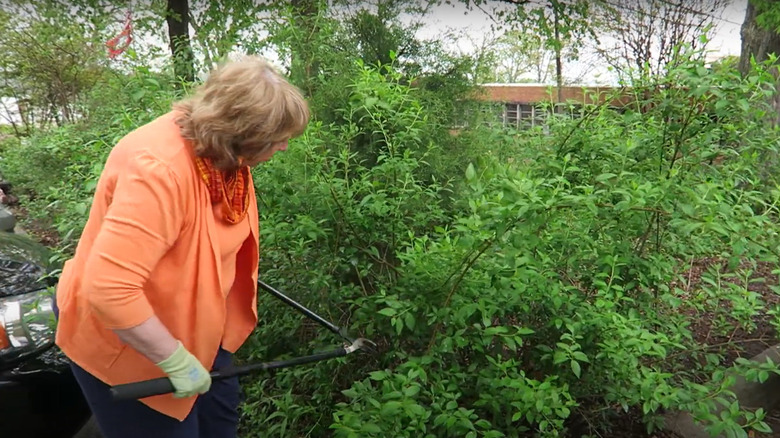Forsythias (Forsythia spp.) symbolize anticipation, and rightfully so. Their radiant, bell-shaped yellow flowers contrasting against melting snow make waiting for spring easier. But the wait feels pointless if the flowers don’t bloom. Celebrated as one of the easiest beginner plants to grow, forsythias have certain requirements, and not meeting them can cost you prized blooms. Selecting the right planting site, cultivar, and pruning time are all important.
Although forsythias are adaptable — establishing themselves in most soil types and putting up with minimal care — they appreciate some effort. While they flower in partial sun, six hours of direct sunlight gets them blazing. Being drought tolerant, they spare you the trouble of watering them consistently, provided the soil meets their needs. Plus, be prepared for varieties that can grow almost 10 feet tall and extend 12 feet wide. So, before planting forsythias, pick a garden site with full sun, well-draining (clay/loamy) soil, and ample room to grow. Don’t forget other visual aspects, either. Forsythias exhaust blooms in under two weeks and give way to lackluster fruits, followed by non-ornamental green foliage that remains until fall. So, they’re best placed in mixed borders or as overstory vegetation for perennials, although they work as screens and specimens, too.
Don’t choose the wrong variety for your zone

Forsythias are peculiar regarding climate adaptability. Despite being hardy in zones 3b to 8, they may not bloom if their buds aren’t resilient in the growth zone. Like most early spring bloomers, they grow buds on old wood that overwinter before flowering during the vernal season. But if the buds can’t withstand the temperature drop, they suffer winter kill. For instance, if the shrub can endure -30 degrees Fahrenheit, it’s unlikely its buds will survive below -25 degrees. While this doesn’t prevent the foliage from growing, as the leaf buds differ from the flowering buds, it minimizes your chances of enjoying golden blooms.
So, grow and care for forsythia plants with buds that are robust in your climate. While you can consult your local extension for suitable options, Northern Gold, Meadowlark, and Northern Sun are adaptive to -39 degrees, -35 degrees, and -30 degrees Fahrenheit, respectively. However, some bud-hardy cultivars may still sustain damage if the winters are harsher than predicted. They may even develop patchy or halo-shaped blossoms after the seasons change. Since accumulated snow insulates the buds, it shields them from winter injury and enables them to bloom come spring, but the buds above the snow line won’t be so fortunate.
Avoid pruning forsythia at the wrong time

Janet Carson / YouTube
Another common mistake gardeners make is pruning forsythias at the wrong time. Never prune these plants in the fall or before they bloom. Forsythias begin producing buds in early summer that grow out the next year during spring, so thinning them out then isn’t beneficial for flowering. Instead, wait for the flowering season to start before giving them a haircut, but finish it before mid-June. Also, these deciduous shrubs become straggly over time, so remove no more than ¼ or ⅓ of the old (thicker) growth from the ground up every alternate year to keep them in tiptop shape. Don’t go overboard, or it will spur excessive new growth.
You can also force the plant to bloom faster by removing a few stems around February’s end and placing them in a water-filled vase indoors. The relatively warmer conditions should have them blooming yellow before the ones in the garden. If you’ve been slacking on your forsythia plants’ maintenance, rescue them through pruning. Simply cut them back to 4 to 6 inches above the substrate during early spring, although winter end works, too. This will put them back on the growth path and have them reblooming in a year or two. Finally, avoid shaping forsythias into balls, as it leaves significant mature, woodier growth on the plant that produces fewer flowers.



